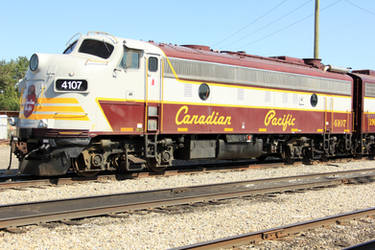ShopDreamUp AI ArtDreamUp
Deviation Actions
Description
The T-38 was designed in the mid 1950s as the trainer variant of a lightweight fighter project (the N-156 project) by the Northrop Corporation (today part of Northrop Grumman). Although the United States Air Force had no need for a small fighter at the time, it became interested in the trainer as a replacement for the T-33 Shooting Star it was then using in this role. The first of three prototypes (designated YT-38) flew on 10 March 1959. The type was quickly adopted and the first production examples were delivered in 1961, officially entering service on 17 March that year, complementing the T-37 primary jet trainer. When production ended in 1972, 1,187 T-38s had been built. Since its introduction, it is estimated that some 50,000 military pilots have trained on this aircraft. The USAF remains one of the few armed flying forces using dedicated supersonic final trainers, as most, such as the US Navy, use high subsonic trainers.
The T-38 is of conventional configuration, with a small, low, long-chord wing, a single vertical stabilizer, and tricycle undercarriage. The aircraft seats a student pilot and instructor in tandem, and has intakes for its two turbojet engines at the wing roots. Its nimble performance has earned it the nickname white rocket—in 1962, T-38s set four climb records.
USAF Thunderbirds flying T-38 Talons in formationThe F-5B and F (which also derive from the N-156) can be distinguished from the T-38 by the wings; the wing of the T-38 meets the fuselage straight and ends square, while the F-5 possesses leading edge extensions near the wing roots and wingtip launch rails for air to air missiles. Under the paint, the T-38 wing is constructed of honeycomb material whereas the wing of the F-5 family is constructed of conventional skin over underlying support structure.
Most T-38s built were of the T-38A variant, but the USAF also had a small number of aircraft that had been converted for weapons training. These aircraft (designated AT-38B) had been fitted with a gunsight and could carry a gunpod, rockets, or bombs on a centerline pylon. In 2003, 562 T-38s were still operational with the USAF and are currently undergoing structural and avionics programs (T-38C) to extend their service life to 2020. Improvements include the addition of a HUD, GPS, INS (Inertial Navigation System), and TCAS as well as PMP (a propulsion modification designed to improve low-altitude engine performance by significantly increasing thrust). Many USAF variants (T-38A and AT-38B) are being converted to the T-38C standard.
Two T-38 Talon chase planes follow Space Shuttle Columbia as it lands at Northrup Strip in White Sands, New Mexico, ending its mission STS-3.The fighter version of the N-156 was eventually selected for the US Military Assistance Program (MAP) and produced as the F-5 Freedom Fighter. Many of these have since reverted to a weapons training role as various air forces have introduced newer types into service. The F-5G was later developed into the single-engine F-20 Tigershark.
The T-38 is of conventional configuration, with a small, low, long-chord wing, a single vertical stabilizer, and tricycle undercarriage. The aircraft seats a student pilot and instructor in tandem, and has intakes for its two turbojet engines at the wing roots. Its nimble performance has earned it the nickname white rocket—in 1962, T-38s set four climb records.
USAF Thunderbirds flying T-38 Talons in formationThe F-5B and F (which also derive from the N-156) can be distinguished from the T-38 by the wings; the wing of the T-38 meets the fuselage straight and ends square, while the F-5 possesses leading edge extensions near the wing roots and wingtip launch rails for air to air missiles. Under the paint, the T-38 wing is constructed of honeycomb material whereas the wing of the F-5 family is constructed of conventional skin over underlying support structure.
Most T-38s built were of the T-38A variant, but the USAF also had a small number of aircraft that had been converted for weapons training. These aircraft (designated AT-38B) had been fitted with a gunsight and could carry a gunpod, rockets, or bombs on a centerline pylon. In 2003, 562 T-38s were still operational with the USAF and are currently undergoing structural and avionics programs (T-38C) to extend their service life to 2020. Improvements include the addition of a HUD, GPS, INS (Inertial Navigation System), and TCAS as well as PMP (a propulsion modification designed to improve low-altitude engine performance by significantly increasing thrust). Many USAF variants (T-38A and AT-38B) are being converted to the T-38C standard.
Two T-38 Talon chase planes follow Space Shuttle Columbia as it lands at Northrup Strip in White Sands, New Mexico, ending its mission STS-3.The fighter version of the N-156 was eventually selected for the US Military Assistance Program (MAP) and produced as the F-5 Freedom Fighter. Many of these have since reverted to a weapons training role as various air forces have introduced newer types into service. The F-5G was later developed into the single-engine F-20 Tigershark.
Image size
2250x1275px 259.82 KB
Make
NIKON CORPORATION
Model
NIKON D90
Shutter Speed
10/8000 second
Aperture
F/8.0
Focal Length
300 mm
ISO Speed
200
Date Taken
May 13, 2009, 2:55:16 PM
Comments0
Join the community to add your comment. Already a deviant? Log In































